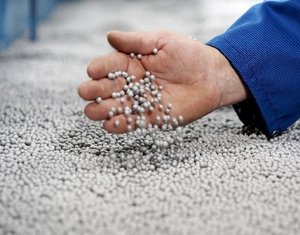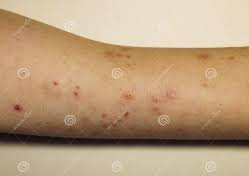EPS is completely harmless to our health
For this baby, the granules clearly give a feeling of comfort
EPS applications are widely used as packaging material in the food industry
According to our source, skin problems can occur with the same application with PUR. It even refers to asthma symptoms.
Such effects have never been found for EPS, also known colloquially as 'styrofoam'.
Mineral wool
Already at the end of 2013, several leading scientists (toxicologists and pulmonologists) warned about the risk of the deadly disease lung fribose when using mineral wool.
Workability
Each insulating material has its advantages and disadvantages in processing. For example, plastic sheets (EPS, PUR) are light and stable in shape and mineral wool (glass and rock wool) is easily pliable.
But what about the health aspect of processing? Anyone who has ever worked with mineral wool knows it. If you don't take precautions, you will get itchy or unpleasantly irritated skin.
Of the three most commonly used insulation materials, mineral wool is the only material in which
protective measures are necessary.
Fibers and indoor climate
There is a clear relationship between the Sick Building Syndrome and mineral wool, especially in office buildings.
This is mainly due to the application of mineral wool tiles in suspended ceilings and the air diffusion by air conditioners.
(Source: Department of Design and Environment Analysis, Cornell University Ithaca)
Formaldehyde and indoor climate
Formaldehyde is a hazardous substance with health risks. It can irritate the skin, eyes, nose and throat, cause headaches or occupational asthma and even lead to spontaneous abortions and birth defects.
(Source: Working conditions portal, Ministry of Social Affairs and Employment)
Formaldehyde emission does occur with mineral wool, but not with EPS and PUR.














































